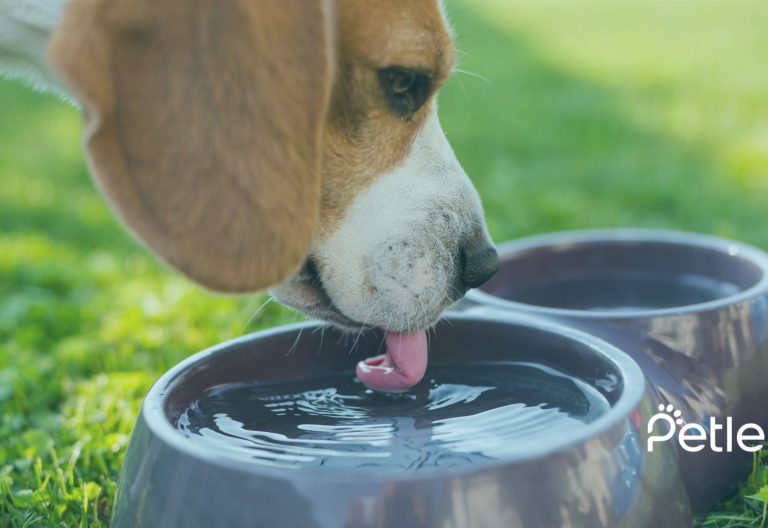As the weather gets warmer, we all want to spend more time outside with our furry friends. However, there are some dangers that dog owners need to be aware of during the summer months.
1.Heat stroke
Heat stroke is a very real danger for dogs during the summer months. It can happen to any dog at any time, but there are certain dogs that are more prone to it. These include dogs that are obese, have heart or respiratory problems, or are elderly.
Dogs that are left in cars or confined in small spaces with no ventilation are also at a higher risk for heat stroke. Symptoms of heat stroke include panting, drooling, increased body temperature, weakness, seizures, and collapse. If you think your dog is suffering from heat stroke, immediately move them to a cool, shaded area. You should then call your veterinarian for further instructions.
2. Sunburns
If your dog has ever been out in the sun for too long, you may have noticed that their skin can get red and irritated, just like ours. This is called sunburn, and it can be very uncomfortable for your furry friend.
There are a few things you can do to help soothe your dog’s sunburn and make them more comfortable. First, give them a cool bath. You can also apply a cool, damp cloth to the affected areas. You can also use a wound spray to the affected areas.
Keep an eye out for any signs of infection on your dog’s skin, such as redness, swelling, or pus. If you notice any of these, take them to the vet as soon as possible.
3. Insect bites
Most insect bites are harmless and cause only minor irritation, swelling, and redness. However, some insects (z.B mosquito, tick, fly, flea) can transmit diseases to dogs such as Anemia, Lyme disease, Ehrlischiosis and other infections. They are most active during spring and summer months, but can be a problem year-round in some areas. If you find a tick on your dog, it is important to remove it properly.
Insect and tick bites can be prevented by using insect repellent on your dog regularly and keeping them away from areas where insects are present.
How to choose the best insect repellent for my dog?
There are a variety of insect repellent products available for dogs, each with their own set of pros and cons. Some of the most popular types include topical repellents, oral repellents, and natural repellents.
There are a few things to consider when purchasing insect repellent for your dog.
- Consider your dog’s weight and don’t use product that doesn’t fit your dog’s weight.
- Consider what active ingredients are present in the product and whether they are safe for your dog. Some dogs can show allergic reaction to some ingredients.
- Think about the ease of application and whether the product will be comfortable for your dog to wear.
- Consider the price of the product and whether it is affordable for you.
What type of insect repellents there are in the market?
Topical repellents are typically applied directly to the dog’s coat and are effective at repelling a variety of insects, including fleas, ticks, and mosquitoes. Some of the most popular brands include Frontline and Advantix. Topical repellents typically last for a few weeks.
Insect repellent collars work by emitting a small amount of insecticide that repels insects, keeping them away from your dog’s skin and coat. They considered as safe for dogs however some dogs can show allergic reaction to the collar such as skin rashes, itchiness.
Natural repellents use a variety of plant-based ingredients, such as citronella, to repel insects. Natural repellents are typically safe for most dogs, but may need to be reapplied more often than other types of repellents. But don’t forget, some natural products may not be as effective as chemical repellents.
Oral repellents are typically given as a chewable tablet and work to repel fleas, ticks, and mosquitoes. Some of the most popular brands include Simparica, Nexgard and Credelio. Oral repellents are considered to be safe for most dogs, but some may experience gastrointestinal upset. If you want to try out oral tablets, please ask your veterinarian.
Please ask your veterinarian to help you to find best suited product for your pet. If your pet had problem with one of these products, they can recommend effective alternative products.
4. Hydration is important
Dogs can get dehydrated in the summer just like people. Dogs sweat through their paws and lose essential fluids, so it’s important to make sure they have access to fresh water and shade when outside. Dehydration can cause dogs to become lethargic, have dry gums, and produce less urine.
If you think your dog is dehydrated, offer small sips of water or take them to the vet immediately.
5. Hot pavements are dangerous for paws
It’s important to keep an eye on your dog’s paws in the summer, as hot pavement can burn them. Be sure to walk them on grass or in the shade as much as possible, and consider getting them some booties or paw balm to protect their paws.




Leave a Reply